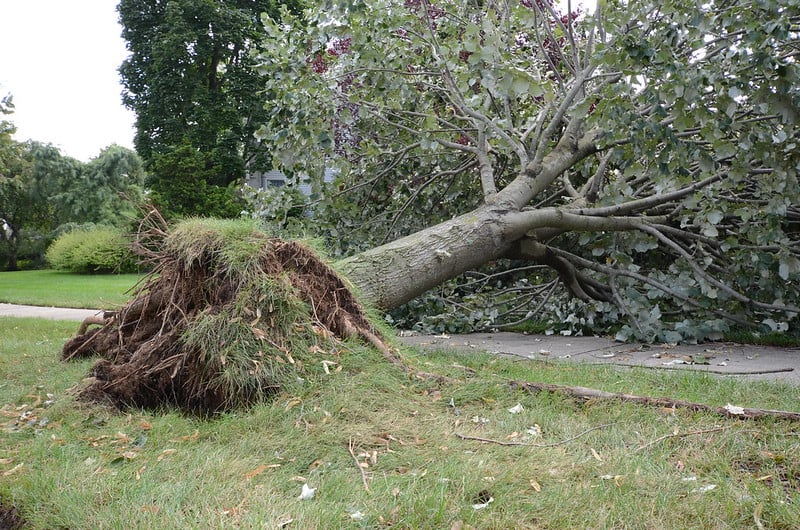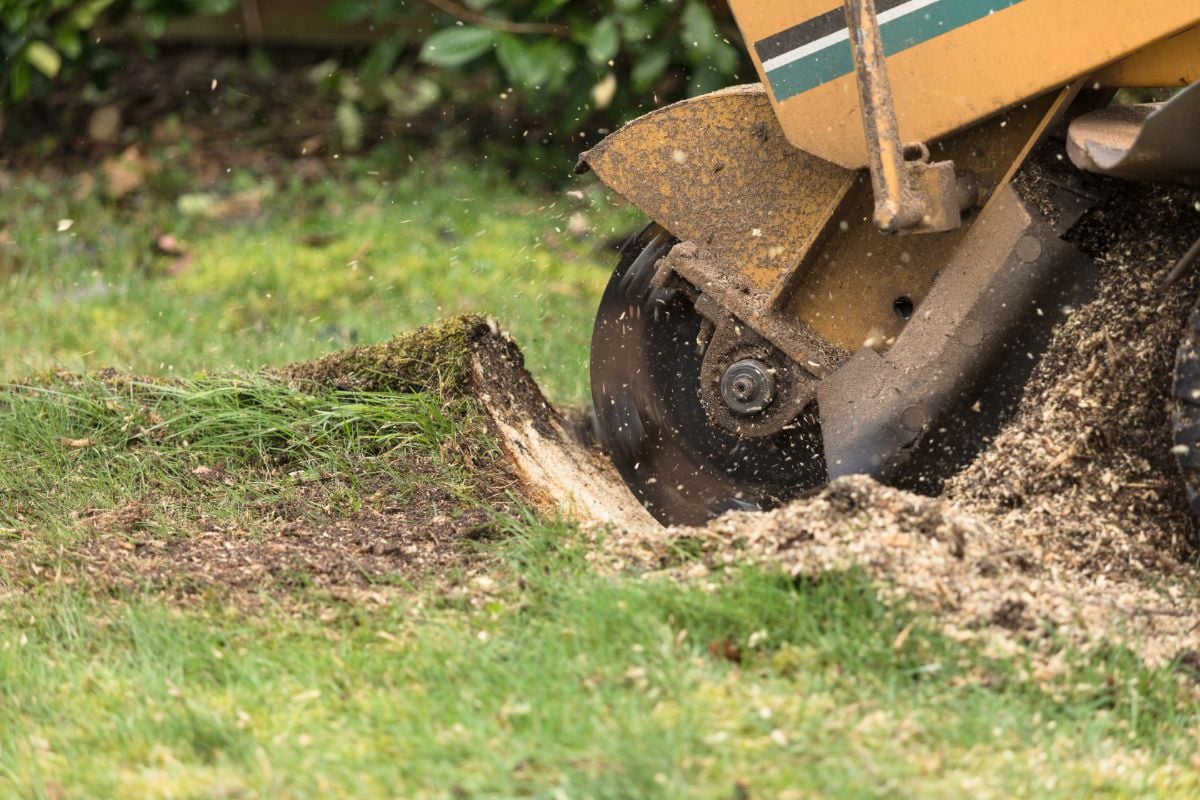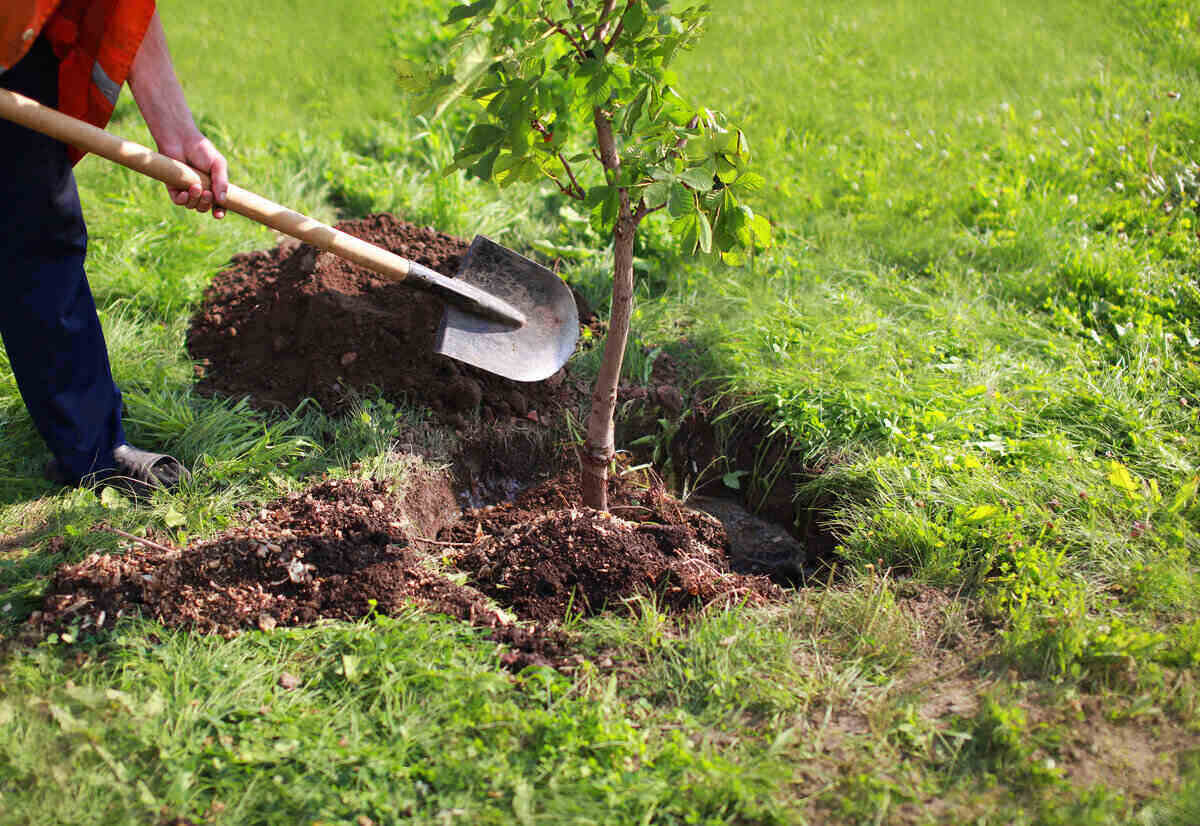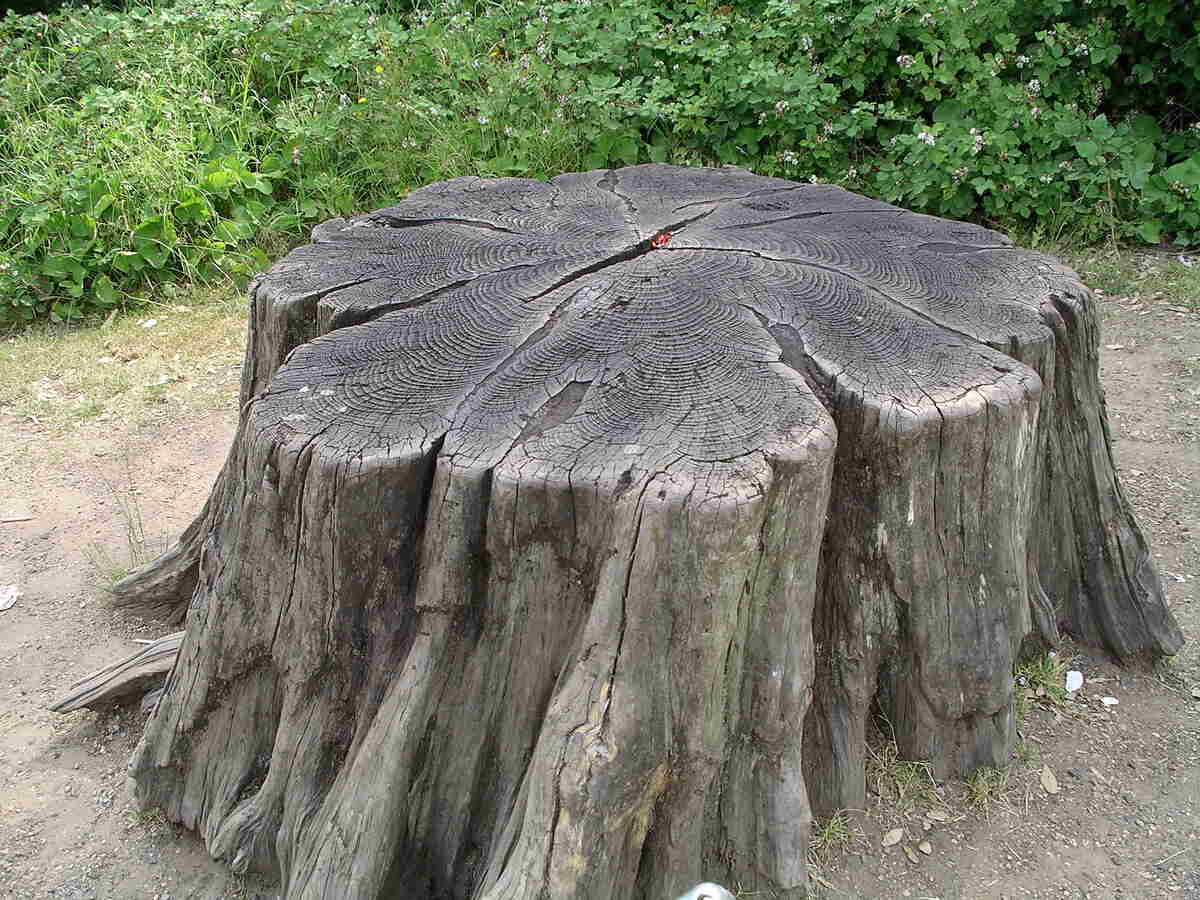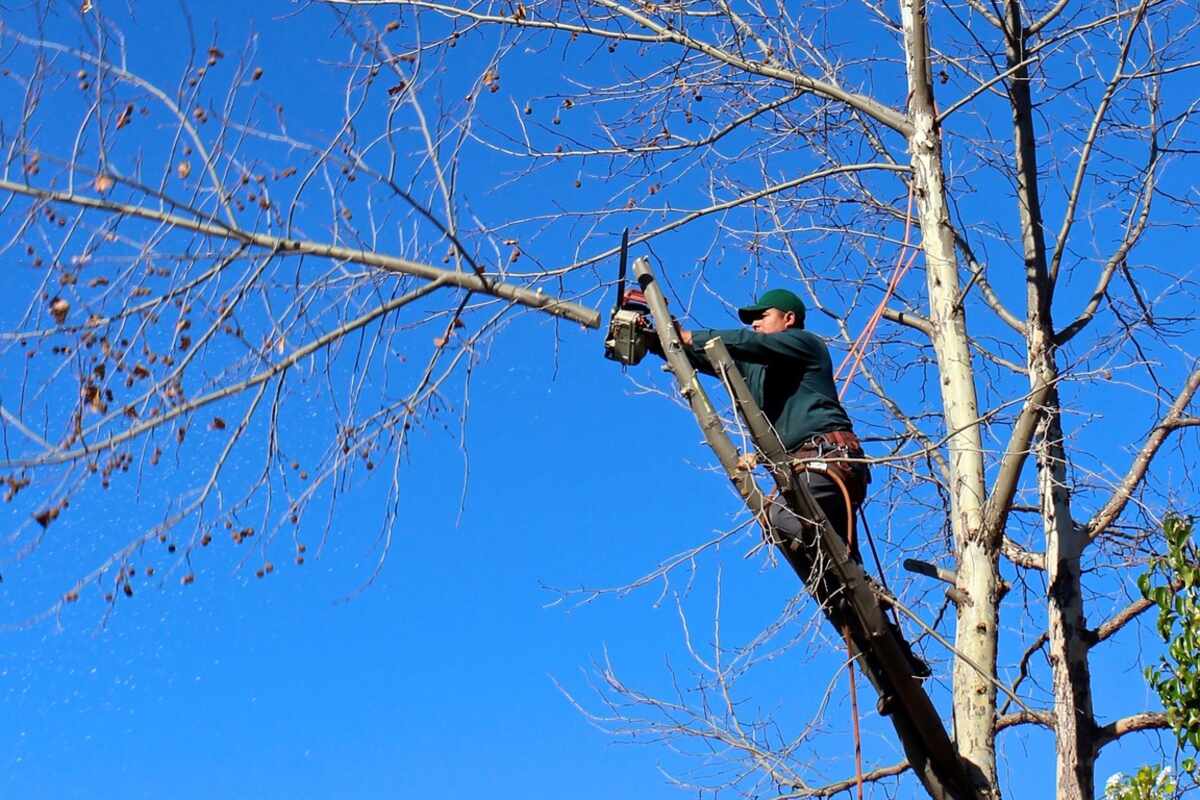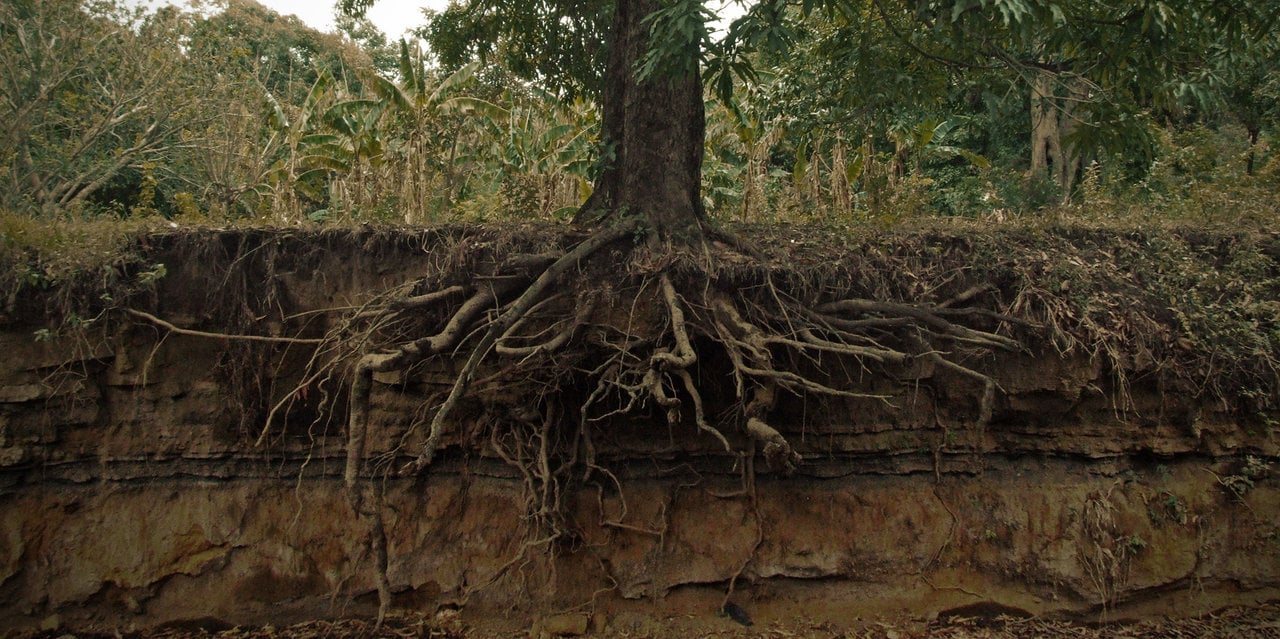
You thought you were done with that tree when the chainsaw fell silent. Not so fast. You still have to deal with tree roots. Tree roots are an entirely different beast. Depending on the size of the tree or the reason for the removal, you may even need to call in professional help to remove the tree roots in your yard.
In this how-to guide, we’ll cover the things you need to know about removing tree roots, the conditions you might face, the best tools to remove roots, and even when you might need to throw in the trowel and call for expert help.
Why Should You Remove Tree Roots?
The most obvious reason to remove tree roots is that there is a stump in your yard that serves as a reminder of a tree that once stood there. And like the rest of the tree, you need it gone for one reason or another.
But that’s not always the case. You may, in fact, want to save the tree because it adds beauty to your landscaping but eliminate the pesky roots that are cracking your sidewalk or clogging the sewer line. Whatever the reason, we’ve got you covered. So let’s get started.
Removing Tree Roots After Tree Removal
Taking out tree roots can be a big job, especially if it was a big tree. Its underground root system can spread 20 feet deep, sometimes even more in the right conditions. To remove tree roots that are left after taking down a tree, in most cases, you have three options:
- Physically remove the roots yourself
- Treat the roots with chemicals
- Hire a professional to solve your underground tree root dilemma
Physically Remove Tree Roots on Your Own
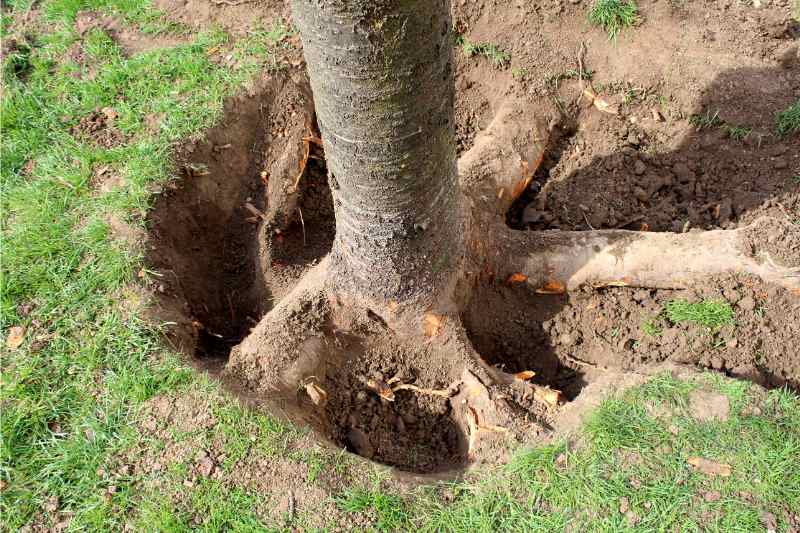
Physically taking out a tree stump and its roots is the fastest, but most laborious, way to get rid of it. Tree stump removal and taking out the tree roots on your own generally involves either digging them out or using a stump grinder. It depends on the type and size of the tree roots you are dealing with. This type of DIY project works best with smaller stumps and roots.
Digging Out Tree Roots
First, call the utility company to make sure you aren’t digging around water, sewer, or other underground lines.
To dig out the roots, you’ll need a few supplies:
- Spade
- Loppers
- Grub hoe
- Root saw (possibly)
Here’s how to dig out tree roots by hand:
- Using your spade, you’ll want to dig out the soil that surrounds the tree root system to expose them. Pull out any loose roots until no more loose ones remain.
- Dig out the dirt surrounding the ones that are still intact and cut through them using your loppers. Try to cut far from the root ball.
- Next, use the grub hoe to lift out the cut roots. Pull additional ones out by hand if you can. Push the stump back and forth to loosen the roots and continue to cut and pull roots until you can remove the root ball from the soil. A root saw may be needed if the roots are too thick for the loppers.
Using a Stump Grinder to Remove Tree Roots
In some cases, digging out the tree roots may prove difficult. But there is another option to physically remove them, and that is with the use of equipment. Stump grinding a pesky tree trunk is work, but you can eliminate it quickly, and even create some fresh wood mulch in the process.
If you use this method, you’ll need:
- Chainsaw
- Shovel
- You’ll need to rent a stump grinder.
The average cost to rent a stump grinder is between $100 and $400. They can be found at your local home improvement stores such as Lowe’s or Home Depot. Or you can rent one from an equipment store such as Sunbelt.
Pro Tip: Because of the debris involved, it’s important to wear the right safety gear. This includes fully covering your body with pants, a long sleeve shirt, and protective headgear and glasses.
- Use your chainsaw to trim the trunk as close to the ground as possible.
- Dig up any rocks and debris around the trunk that could damage your grinder.
- Once the trunk and roots are prepped, you can drive the grinder onto the stump and start grinding it down.
Depending on the size and location of the tree, you’ll grind down anywhere from 2 to 4 or more inches. After you’ve completed this, use your shovel once again to dig up tree roots that were attached to the trunk.
After Stump Grinding Is Finished, Now What?
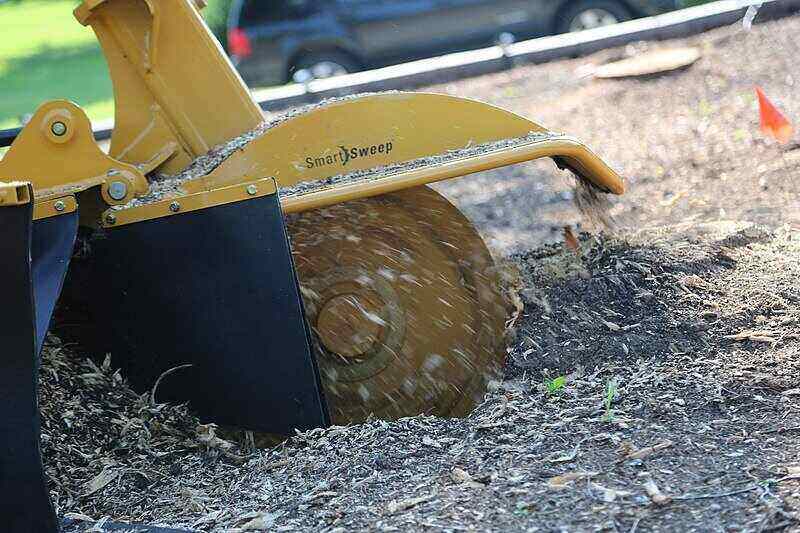
Now, that you’ve ground up the tree stump, you’ll likely be staring at a pile of wood shavings. Here’s what to do next:
1. Rake out the wood shavings: You need to remove the wood shavings with a rake. The wood shavings can be used as mulch in your garden beds or put into your compost pile along with your kitchen waste to make nutrient-rich matter for your garden soil.
2. Fill in the depression with topsoil: Once you remove the shavings, you’ll be able to see if you have a slight depression in the ground from where the stump was removed. (Make sure you’ve removed all the wood shavings and any other roots, etc., to clean the area of debris.)
To make the depression level, you will need a good quality topsoil to fill it in. The depth of the depression will determine how much topsoil you’ll need. Once you fill in the depression, smooth out the surface with a garden rake to be level with the ground.
3. Tamp the soil: Once the topsoil is in place and smoothed out, you will need a way to compact it and prevent it from creating a low spot that holds water. To accomplish this, you can use a hand tamper, also known as a manual tamper, which can be rented from nearby home and garden retail stores.
4. Plant grass seed: After leveling the topsoil, you can plant grass on the newly cleared spot and incorporate it into your lawn.
5. Other ideas: One option to consider is planting a new tree in the same spot, but be sure there are no leftover roots that impede its growth. Alternatively, you could incorporate the new spot into a garden bed. While deciding on your next steps, regularly monitor and care for the hole until it blends seamlessly into the rest of the yard.
Treat the Roots With Chemicals
If you choose to treat the tree’s roots, there is a chemical herbicide option, which works fast to eliminate roots, or the more natural option of using rock salt, which is equally effective but takes longer. You can also use Epsom salt or another highly concentrated form. Table salt won’t do the trick.
Remove Roots Using a Chemical Compound
Treating chemically is easier, but will take longer.
You will need:
- Saw
- Water hose
- Garden sprayer or paintbrush
- Herbicide – a glyphosate herbicide with an active ingredient concentration of at least 41 percent is best.
Pro Tip: Wear safety goggles or a face shield, a dust mask, and hearing protection while working with the saw.
- Use the saw to make a fresh cut across the tree stump.
- Saturate the tree’s outer layer (just behind the bark) with water. The water will help distribute the herbicide to the tree roots.
- Next, mix the glyphosate herbicide with water to create a 50/50 solution, and use your garden sprayer to saturate the outer ring of the tree stump with it. Try to avoid getting the solution on the grass or any nearby plants.
Once the chemical treatment is applied, you just wait. It will take about two weeks for the tree roots to completely die off.
Remove Roots With Rock Salt
It will take a few months and a few applications to get the job done.
First, you’ll need:
- A drill
- Drill bit that’s 3/8 of an inch in diameter
- Rock salt
- Water
Pro Tip: Take care when handling rock salt and always wear gloves. When it contacts your skin, it can cause “salt burns.”
- Drill several holes in the tree stump that are about 3 to 4 inches deep. If there are any exposed roots on the ground, drill holes in these too.
- Fill each hole completely with the rock salt, then add enough water to cover the hole without any spilling out and causing damage to other vegetation. Do this several times each month.
The rock salt will rob the roots of any water and after a few months, your tree roots should be dead.
There’s one more way we haven’t mentioned: fire. Check out this section on how to burn a stump if you’re interested in this method.
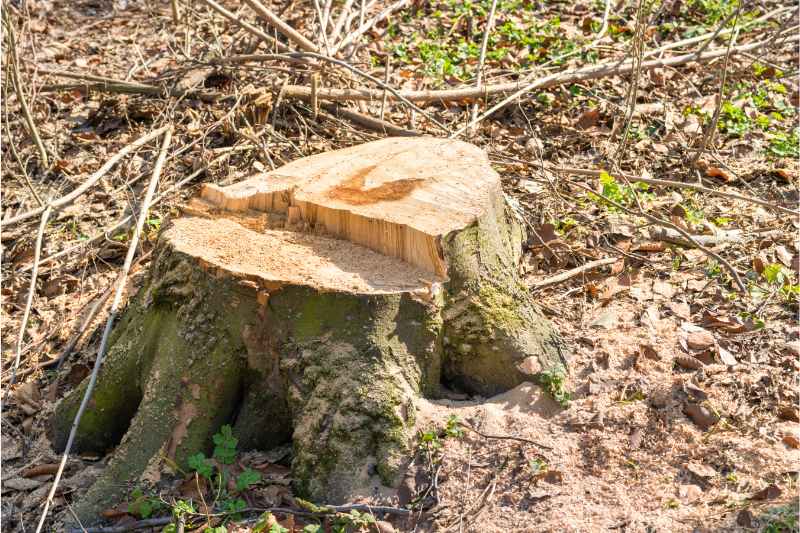
Hire a Professional
There are several reasons that you may want to hire a professional tree service to remove your tree stump and its root system. For example, if you don’t want to mess with the physical work of digging or grinding the stump yourself, and you don’t want to wait weeks or even months for it to go away, then it’s a good idea to let a pro take care of it for you.
In many cases, if you have the tree professionally removed, then you can hire the same company to take out the stump too — for an additional fee.
On average, the cost of stump removal by a professional tree removal service can range from $175 – $516 depending on the size and location of the tree stump.
An Expert’s Take
According to Bates Hite, the owner of Tree Stump Masters in Atlanta, he’s seen homeowners do all kinds of crazy things to remove tree stumps, even lighting them on fire with charcoal. And he warned that the stump grinders you can rent at the local home improvement store are not powerful enough for larger roots.
“You can’t rent a big enough piece of equipment to get the job done right on a large tree stump. You need to go deep, and you need a big machine,” he said. If you have a large stump and root system to remove, this is likely a job for the pros.
How To Remove Tree Roots Inside Your Plumbing Pipes

Clogged plumbing due to tree roots is a common issue for homeowners. But if you take proactive measures, you can easily correct this problem with just a little rock salt.
- Pour about half a pound of rock salt at a time into your toilet and flush until it goes down the pipes.
- Repeat until you’ve used a full two pounds.
- Then close off the bathroom and don’t let anyone in the family use that toilet for about 8 to 12 hours.
The rock salt will kill the tree roots by robbing them of their moisture. Repeat this monthly for ongoing maintenance.
As an alternative to rock salt, you can buy root killers for plumbing pipes online or at your local home improvement store to prevent or get rid of roots inside your plumbing.
Tree Root Removal Without Harming the Tree
Sometimes you love the tree in your yard but hate the roots that are tearing up your sidewalk or clogging up the plumbing. So what do you do about them? Can you eliminate these roots without harming your tree?
The answer here is yes. You can trim the roots back and take measures to prevent them from returning in unwanted areas.
Here’s what you’ll need:
- Water hose
- Hand trowel
- Wheelbarrow or tarp to place the dirt
- Root saw
- Material to create a root barrier (plastic, metal, or concrete)
Follow these steps to trim the tree roots and avoid harming your tree:
- With supplies ready, start by using your hose to soften the ground with water. You want the ground to be damp, but not soggy.
- Next, use the hand trowel to loosen the soil and feel out the roots.
- Remove the soil in and around the roots and place it in the wheelbarrow or on the tarp. It’s best to use your hands for this.
- Once the area is clear of dirt, cut the roots using your root saw, but be careful.
- After you’ve trimmed the roots, dig a trench between them and the area that you don’t want them to go.
- Create a barrier at least 12 inches high and 10 inches long using a material like metal, plastic, or concrete, then cover it with soil.
- Pat or compact the soil down and spray with water to wet the ground.
A few guidelines to follow so that you don’t damage the tree are:
- Don’t cut more than one-third of the roots.
- Measure the tree trunk’s diameter, then multiply it by three. That’s as close to the trunk as you want to cut.
- Cut only those roots smaller than the size of a fist.
- Do not cut any more than 25% from one side.
FAQ
What is the Easiest Way to Remove Tree Roots?
While labor-intensive, the easiest way often is to dig around the stump, exposing the roots, then using a chainsaw or hatchet to cut the large roots. You can use gardening shears to cut smaller roots.
If you don’t want to pull out your chainsaw, rock salt or a glyphosate herbicide with an active ingredient concentration of at least 41 percent can dissolve tree roots as well.
What Tool Removes Tree Roots?
Depending on the size of the root, you can use gardening shears, a chainsaw, a hatchet, or a handsaw to cut away roots.
If you have roots from multiple trees that you’d like to remove and have a larger area, the best tool to remove roots is a compact digger or a mini digger. The compact digger works best for smaller trees.
What Should I Do With a Tree Stump?
If you have a tree stump, then it should all be removed to prevent health hazards like mold or fungus. The dead tree can still spread disease to your healthy ones if left in place. (If you are unsure about the general health of your trees, consult a certified arborist.)
If you’d prefer someone else did the work, check out our comprehensive pricing guides:
• How Much Does Stump Grinding Cost?
• How Much Does Stump Removal Cost?
If you’re a creative type and love to adorn your lawn, check out these tree stump ideas to elevate your yard’s appearance.
Should I Remove the Roots in My Yard?
If it’s only for aesthetic reasons, no. If the roots are threatening to damage structures or sidewalks, yes. If you do decide to move forward with cutting your tree roots, make sure to protect yourself with proper safety gear.
Call in the Tree Care Experts
Some jobs are best left to the pros: A tree expert, like an arborist, knows how to get rid of tree roots safely and effectively. Contact a local landscape expert to take care of uprooting the problem roots in your lawn.
Main image credit: Aaron Escobar / Flickr / CC 2.0
